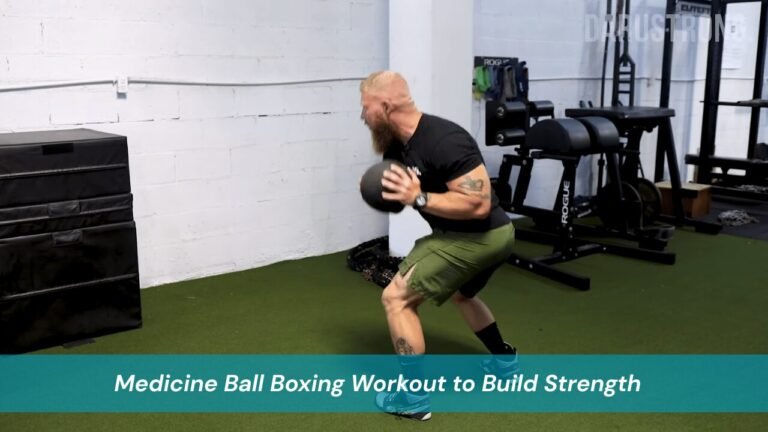Losing weight isn’t just about fitting into smaller clothes; it’s a transformative journey toward a healthier, more energized, and empowered life. Beyond aesthetics, losing weight helps lower the risk of chronic diseases, boosts self-confidence, and improves overall physical and mental well-being. However, with the overwhelming amount of diets, supplements, and trendy solutions circulating online, knowing how to approach weight loss effectively can feel like navigating an intricate maze. Many people fall into the trap of quick fixes, only to experience temporary results or even health setbacks. This guide aims to provide evidence-based strategies, expert insights, and practical advice that you can integrate into your lifestyle for lasting, sustainable results.
Why Weight Loss Matters
Globally, more than 1.9 billion adults are overweight, and over 650 million are classified as obese, according to the World Health Organization. Obesity is a leading contributor to a host of serious health conditions, including cardiovascular diseases such as heart attacks and strokes, type 2 diabetes, various cancers including breast, colon, and liver cancers, osteoarthritis, and sleep apnea, which can significantly impact quality of life. Research consistently shows that losing even a modest 5–10% of body weight can dramatically improve key health markers, such as blood pressure, cholesterol levels, and blood sugar control. Beyond physical health, weight loss can enhance energy levels, mobility, and reduce discomfort in joints, making daily activities easier and more enjoyable. Moreover, shedding excess weight often positively impacts mental and emotional health. Many individuals report enhanced mood, reduced anxiety, and an increased sense of self-worth as they progress on their weight loss journey, emphasizing that this process is as much about inner transformation as it is about external changes.
Understanding the Basics: How Weight Loss Works
At its essence, weight loss occurs when your body burns more calories than it consumes, creating a caloric deficit. While the concept seems simple, several interconnected factors influence how effectively your body can shed pounds. Basal Metabolic Rate, or BMR, represents the number of calories your body requires at rest to maintain essential functions like breathing and circulation. Your activity level, which includes both structured exercise and daily movement, significantly affects caloric expenditure.
Hormonal balance plays a vital role as well; hormones such as insulin, cortisol, and leptin impact appetite regulation and fat storage. Genetics also influence how efficiently your body stores and burns calories. Additionally, lifestyle factors like sleep quality and stress management are crucial, as poor sleep and chronic stress can hinder metabolism and sabotage weight loss efforts. Understanding these elements allows you to approach weight loss with a comprehensive, informed strategy rather than relying on trial and error.
Setting Realistic Goals The SMART Approach
Before making dietary or exercise changes, it is important to establish achievable goals. Health professionals often recommend using the SMART framework to set goals that are specific, measurable, attainable, relevant, and time-bound. Specific goals clarify exactly what you want to achieve, such as losing 15 pounds. Measurable goals enable you to track progress using scales, measurements, or photographs. Achievable goals consider your current weight, lifestyle, and available resources. Relevance ensures that your objectives align with broader health and life priorities. Finally, time-bound goals include a clear deadline, such as losing 15 pounds in three months. Vague or extreme goals, like dropping 30 pounds in a month, are not only unrealistic but can also endanger your health and motivation. By setting structured, realistic objectives, you create a roadmap that guides your efforts and increases the likelihood of long-term success.
Dietary Strategies for Effective Weight Loss
Nutrition is widely regarded as the cornerstone of any successful weight loss plan. Even the most rigorous exercise routine cannot compensate for a consistently poor diet. Focusing on whole, minimally processed foods provides essential nutrients and promotes satiety, reducing the likelihood of overeating. Fresh vegetables such as spinach, carrots, and bell peppers are rich in fiber, vitamins, and minerals that support metabolism and overall health. Fruits like apples, berries, and oranges offer natural sugars and antioxidants that fuel the body and enhance well-being. Whole grains, including brown rice, oats, and quinoa, provide sustained energy and help maintain blood sugar levels. Lean protein sources such as chicken breast, turkey, tofu, and legumes build and maintain muscle mass, which is crucial for burning calories efficiently. Incorporating healthy fats like avocados, olive oil, and nuts supports hormone balance and satiety while delivering essential fatty acids.
Portion control is another critical aspect of effective dietary planning. Restaurant servings and packaged meals are often much larger than necessary, contributing to unintended calorie intake. Utilizing smaller plates, being mindful of portion sizes, and learning the approximate volume of standard servings can significantly reduce caloric excess. Staying hydrated is equally essential. Drinking water throughout the day supports metabolism, aids digestion, and helps distinguish between hunger and thirst, which can prevent unnecessary snacking. Limiting added sugars and refined carbohydrates is also a key factor. Sugary sodas, white bread, pastries, candies, and highly processed snacks can lead to insulin spikes and increased cravings, undermining weight loss efforts. Finally, maintaining regular meals prevents metabolic slowdowns and reduces the risk of overeating later in the day, establishing a consistent rhythm for energy and nutrient intake.
Exercise and Physical Activity for Weight Loss
Physical activity complements dietary strategies by burning calories, building lean muscle, and promoting overall health. Exercise also plays a critical role in regulating mood and appetite, creating a holistic approach to weight management. Cardiovascular exercises, including walking, running, cycling, or swimming, increase heart rate, improve cardiovascular function, and facilitate calorie expenditure. Strength training with weights, resistance bands, or bodyweight exercises develops muscle mass, which in turn elevates basal metabolic rate, enabling the body to burn more calories even at rest. High-Intensity Interval Training (HIIT) alternates short bursts of intense activity with periods of rest, providing an efficient method for fat burning and cardiovascular improvement. Flexibility and balance exercises, such as yoga or Pilates, enhance mobility, reduce injury risk, and improve overall body awareness. The NHS recommends at least 150 minutes of moderate-intensity activity or 75 minutes of vigorous activity per week, combined with two strength-training sessions, to maintain optimal health and support weight loss.
Lifestyle Factors That Impact Weight Loss
Sleep quality and stress management are often overlooked but essential components of weight management. Chronic sleep deprivation disrupts hunger-regulating hormones, increasing cravings and reducing the capacity for self-control. Adults should aim for seven to nine hours of restorative sleep each night to support metabolic health and cognitive function. Stress triggers cortisol release, which can increase appetite and promote abdominal fat accumulation. Engaging in mindfulness practices, journaling, talking with a therapist, or incorporating light physical activity can help mitigate these effects. Additionally, creating an environment conducive to healthy choices is essential. Keeping nutritious foods readily available, removing junk food from a prominent view, and establishing routines that minimize compulsive eating support consistency and adherence to weight loss goals.
Tracking Progress: More Than Just the Scale
Relying solely on scale weight can be misleading. Comprehensive tracking should include how clothes fit, waist circumference, body fat percentage when accessible, energy levels, resting heart rate, and improvements in health markers such as cholesterol or blood glucose. Journaling meals, workouts, and moods can provide a detailed overview of your journey, helping identify patterns and areas for adjustment. Tracking allows for informed decisions and fosters motivation as incremental improvements become visible, reinforcing the value of consistency and patience.
Common Weight Loss Myths Debunked
Many misconceptions persist regarding weight loss. Contrary to popular belief, healthy carbohydrates from fruits, vegetables, and whole grains are essential for energy and metabolic function, while the issue lies with refined carbohydrates and sugars. Similarly, consuming moderate amounts of healthy fats does not cause weight gain; instead, these fats support satiety and nutrient absorption. Spot-reduction of fat is also a myth; targeted fat loss is not physiologically possible, and overall body composition changes according to genetics, hormones, and consistent effort. Supplements, while useful in addressing deficiencies, cannot replace a balanced diet and consistent lifestyle. Recognizing and dismissing these myths prevents frustration and encourages sustainable practices.
Real-Life Case Study: John’s Sustainable Weight Loss
John, a 45-year-old accountant weighing 240 pounds with high blood pressure, embarked on a sustainable weight loss journey. He adopted a plant-based, high-protein diet, coupled with a daily 45-minute walk. Over one year, he lost 50 pounds, normalized his blood pressure, and reversed his pre-diabetes. John avoided fad diets or expensive supplements, demonstrating that consistent effort, mindful choices, and adherence to evidence-based strategies yield substantial results. His story emphasizes that sustainable habits, rather than shortcuts, produce lasting transformation and improved health outcomes.
Tips to Maintain Your Weight After Losing It
Maintaining weight loss is a lifelong process rather than a temporary phase. Regularly tracking food intake, weighing yourself weekly, staying active through enjoyable activities, and preparing meals in advance all contribute to lasting results. Adequate sleep and stress management, combined with support systems such as accountability partners or community groups, reinforce adherence and motivation. Research indicates that individuals who maintain their weight loss consistently engage in physical activity, eat a balanced breakfast, and establish routines that sustain their health improvements over the long term.
FAQs
How fast can I lose weight safely?
Aim for 1–2 pounds per week. Faster weight loss often results in muscle loss, nutrient deficiency, or rebound weight gain.
Can I lose weight without exercising?
Yes, but combining diet and exercise leads to better long-term success and overall health improvement.
Do cheat meals ruin progress?
Occasional cheat meals can help with cravings and motivation, but regular bingeing will undo your progress. Moderation is key.
What if I hit a plateau?
Try adjusting your calorie intake, increasing physical activity, or reassessing portion sizes. Also check for hidden calories like sugary drinks or sauces.
Should I count calories?
For beginners, calorie counting can help with awareness. Over time, focus more on nutrient quality and portion control.
Conclusion
Weight loss is a gradual, ongoing process rather than a short-term sprint. There are no magic solutions or universal formulas, but evidence-based strategies, clearly defined goals, and consistent effort can make long-term weight loss achievable. Begin by evaluating habits, setting a SMART goal, and making a small but impactful change today, whether that is reducing sugary beverages or incorporating a daily walk. Every transformation begins with a single, conscious decision. For further support, explore fitness essentials and gear designed to enhance home workouts, motivation, and sustainable success, ensuring your journey toward a healthier, more vibrant life is both effective and enjoyable.




